Adventure Panama
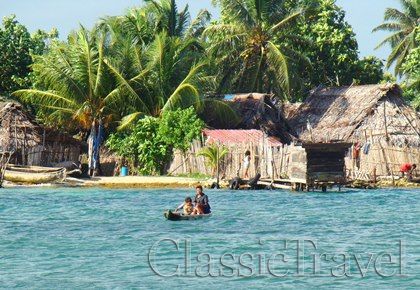
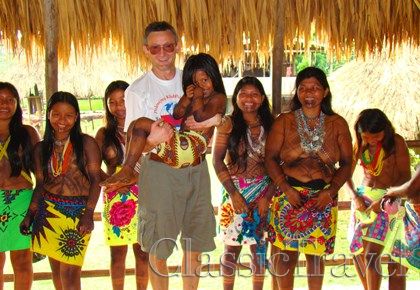
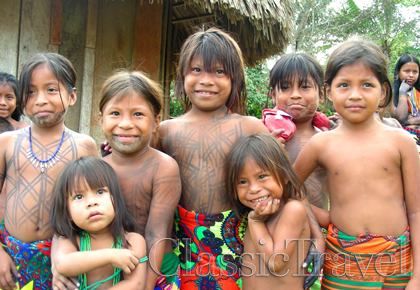
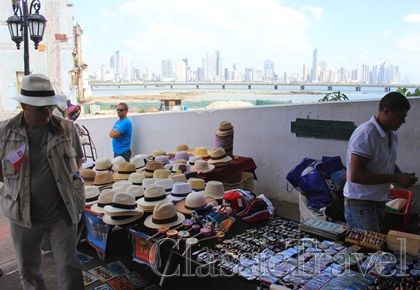
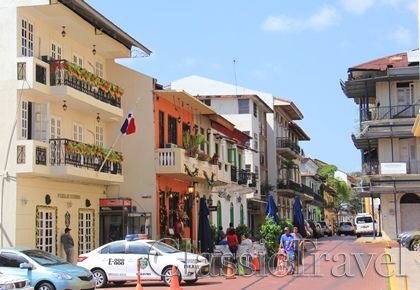
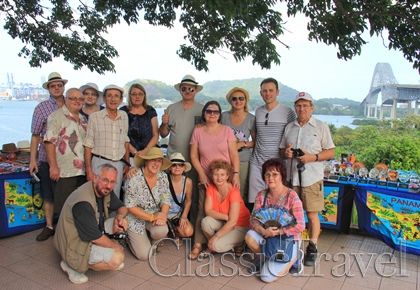
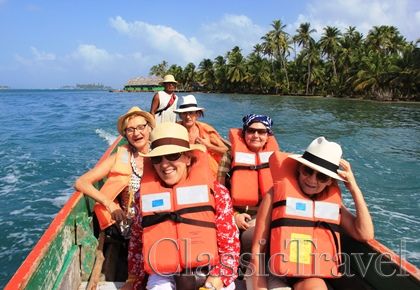
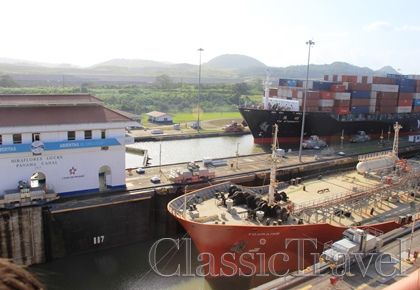
Adventure Panama
Panama Canal - San Blas - Kuna
This journey will bring you culture shock without a doubt. After seeing Panama City and the Panama Canal - full of tehcnological and engineering wonders - we will visit the Emberas and Kuna (San Blas) natives, who live in areas that emanate lifestyles from 500 years ago when discovered by Christopher Columbus. Their traditions, folklore, outfits and cuisine will provide for a travel back through time. $100 discount for students
-
Author: Regina Dzidziul (Trip Participant)Travel date: January 3-10, 2015Date posted: 01 February 2015
-
Author: Paul B. (Trip Participant)Travel date: March 2014Date posted: 15 May 2014
Add Comments or Review the Trip
Day 1: Flight to Panama City
Arrival in Panama City in the afternoon/evening. Greeting by our local guide and transfer to the Aloft Panama.
Day 2: Panama City & the Panama Canal

Today morning we will start a full day tour of Panama City as well as the famous Panama Canal, functioning since 1914. Our first steps will be in the historical part of town known as Casco Viejo as well as the fortress ruins conquered and destroyed by the famous pirate Captain Morgan in 1671. We will have lunch along the scenic Amador Causeway.
After lunch we'll begin touring the Panama Canal with a short visit to Culebra Cut, where engineers had the most difficult time digging the canal. Next we will traverse the canal on a large bridge above the canal to see the Miraflores section. We'll have a chance to see massive ships pass through the canal. The Panama Canal is 48 miles long with locks around 110 feet wide. The canal connects the Atlantic Ocean (Caribbean Sea) with the Pacific Ocean (Gulf of Panama). (B,L)
Day 3: Flight: Panama City - San Blas Islands
After a very early breakfast we will transfer to the airport. At 6:00am we depart Panama City for a short 50 minute flight to the San Blas Archipelago, inhabited by the Kuna Natives. Transfer by motor boat to our island. After lunch we'll take a boat ride to an inhabited island to learn the customs and traditions of life in this unique community, almost completely isolated from our 'civilized' world. Dinner and accommodations at the Yandup Island Lodge at San Blas. (B,L,D)
Day 4: San Blas Islands - Kuna Native visit
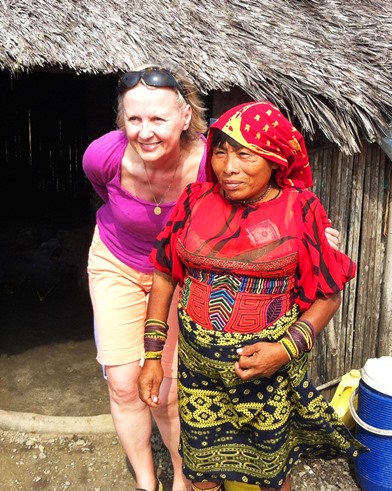
Full day stay at the San Blas Islands will be maximized to explore as many of the islands as possible, strewn out along miles of water, totaling around 370+ islands and isles! Only about 40 of these islands/isles are inhabited by the Kuna Natives. We will be surrounded by blue skies, crystal clear turqoise waters, lush greenery, clean sandy beaches and friendly natives in their colorful outfits. These are the conditions we will be living in for these two days, which will not be easy to part with!
This morning and afternoon we have plans to visit islands by motor boat for a few hours each. The underwater world surrounding the islands is equally as fascinating, taking as many chances as we can to go snorkeling, given SCUBA diving is prohibited in San Blas. (B,L,D)
Day 5: Flight: San Blas - Panama City
After an early breakfast we will transfer by boat to the airport and fly to Panama City at 7:05am. Today we will have a free day to explore Panama City and do some shopping/relaxing. An optional tour of Gatun Lake will be available, where we can interact with spider monkeys, ride along big ships passing in the canal and have a lunch in the jungle. (B)
Day 6: Panama City - Embera Native Village / Chagres River
After breakfast we'll begin our transfer to the Embera Village. We will take a short motor boat ride and be welcomed by natives playing music. There, with a local guide, we will begin our two day stay in accommodations similar to those of the local natives. Next we will eat a meal with the locals. In the early afternoon we will take a motor boat and then hike to a waterfall with free time to take a swim and relax. Dinner will be prepared by the locals right in our own hut. After dinner we will have a short evening trip by boat to observe the wildlife of the jungle at night. (B,L,D)
Day 7: Embera Native Village - Panama City
After an early wake up call we will hike through the jungle for 45 min before breakfast, guided by a local shaman. We will be looking to observe tropical birds, learn about plants used for various healing and spiritual purposes and more. After lunch there will be time to shop for souvenirs and observe villager dances and music performances. Afterwards we will return to our hotel in Panama City with a free afternoon. Our farewell dinner will be in Casco Viejo, the old part of town, where we can try traditional Panamanian food. (B,L,D)
Day 8: Departure from Panama City
After breakfast we will have free time until our transfer to the airport and departure from Panama City. (B)
Abbreviations: B – Breakfast; L – Lunch; D – Dinner
Panama Canal
The Panama Canal is a 77.1-kilometre (48 mi) ship canal in Panama that connects the Atlantic Ocean (via the Caribbean Sea) to the Pacific Ocean. The canal cuts across the Isthmus of Panama and is a key conduit for international maritime trade. There are locks at each end to lift ships up to Gatun Lake, an artificial lake created to reduce the amount of excavation work required for the canal, 26 metres (85 ft) above sea level. The current locks are 33.5 metres (110 ft) wide. A third, wider lane of locks is currently under construction and is due to open in 2015.
France began work on the canal in 1881, but had to stop because of engineering problems and high mortality due to disease. The United States took over the project in 1904, and took a decade to complete the canal, which was officially opened on August 15, 1914. One of the largest and most difficult engineering projects ever undertaken, the Panama Canal shortcut greatly reduced the amount of time taken for ships to travel between the Atlantic and Pacific Oceans, enabling them to avoid the lengthy, hazardous Cape Horn route around the southernmost tip of South America via the Drake Passage or Strait of Magellan. The shorter, faster, safer route to the U.S. West Coast and to nations in and around the Pacific Ocean allowed those places to become more integrated with the world economy.
During the construction era, ownership of the territory that is now the Panama Canal was first Colombian, then French, and then American. The US continued to control the canal and surrounding Panama Canal Zone until the 1977 Torrijos–Carter Treaties provided for handover to Panama. After a period of joint American–Panamanian control, the canal was in 1999 taken over by the Panamanian government, and is now managed and operated by the Panama Canal Authority, a Panamanian government agency.
Annual traffic has risen from about 1,000 ships when the canal opened in 1914, to 14,702 vessels in 2008, the latter measuring a total of 309.6 million Panama Canal/Universal Measurement System (PC/UMS) tons. By 2008, more than 815,000 vessels had passed through the canal, many of them much larger than the original planners could have envisioned; the largest ships that can transit the canal today are called Panamax. The American Society of Civil Engineers has named the Panama Canal one of the seven wonders of the modern world.
Kuna People
Guna, also known as Kuna or Cuna is the name of an indigenous people of Panama and Colombia. The current preferred and legally recognized spelling is Guna. In the Kuna language, they call themselves Dule or Tule, meaning "people", and the name of the language in Kuna is Dulegaya, meaning "Kuna language" (literally "people-mouth").
The Kunas were living in what is now Northern Colombia and the Darién Province of Panama at the time of the Spanish invasion, and only later began to move westward towards what is now Kuna Yala due to a conflict with the Spanish and other indigenous groups. Centuries before the conquest, the Kunas arrived in South America as part of a Chibchan migration moving east from Central America. At the time of the Spanish invasion, they were living in the region of Uraba and near the borders of what are now Antioquia and Caldas. Alonso de Ojeda and Vasco Nunez de Balboa explored the coast of Colombia in 1500 and 1501. They spent the most time in the Gulf of Uraba, where they made contact with the Kunas.
San Blas Islands
The San Blas Islands of Panama are an archipelago comprising approximately 378 islands and cays, of which only 49 are inhabited. They lie off the north coast of the Isthmus of Panama, east of the Panama Canal. They are home to the Kuna Indians and a part of the comarca (district) Guna Yala (also spelled Kuna Yala) along the Caribbean coast of Panama. The area is popular for sailing, as it is known for its beauty and lack of hurricanes.


